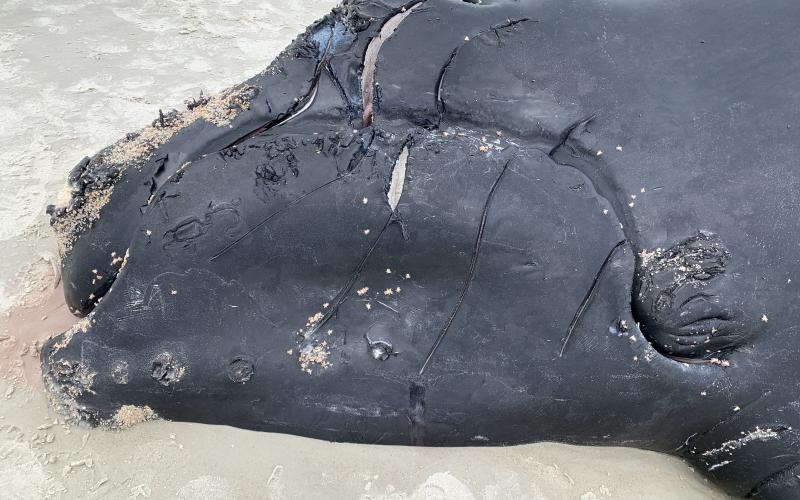New information from the National Oceanic and Atmospheric Administration suggests North Atlantic right whales may be closer to extinction than previously thought.
Vessel strikes and fishing gear entanglements continue to be the leading causes of injury and death for the right whales, and the new data shows that 114 right whales have either died or suffered serious or sublethal injury or illness.
NOAA Fisheries officially declared an Unusual Mortality Event for the right whales in 2017, when the population began to show evidence of a steep decline. An Unusual Mortality Event is defined as “a stranding that is unexpected; involves a significant die-off of any marine mammal population; and demands immediate response.”
Since 2017, there have been 36 dead right whales, 33 seriously injured and 45 sublethally injured or ill, as reported by NOAA Fisheries.
“The species is approaching extinction with fewer than 350 individuals remaining and fewer than 70 reproductively active females remaining,” the report reads. “The primary causes of the UME are entanglements in fishing gear and vessel strikes in both U.S. and Canadian waters, which are long-standing threats to the recovery of the species. Several cases include adult females or calves, which are particularly concerning. The 114 UME cases are a minimum because research suggests a majority of right whale deaths and injuries are undetected.”
Research suggests only a third of North Atlantic right whale deaths are recorded.
As population numbers have declined, the number of births every year has also begun to show signs of stagnation. In the 2023 season, 12 calves were born. In 2022, 15 calves were born.
Pregnant mothers make the journey from New England and Canada every year to Northeast Florida to calve and nurse their young in the warmer waters. NOAA Fisheries has proposed an amendment to existing vessel speed restrictions that would prohibit vessels 35 feet and longer from exceeding speeds of 10 knots in areas popular with these mothers and calves during the calving season, from November to May every year. The agency, however, has experienced significant pushback, including a Congressional bill that would prohibit any amendments being made to the rule before technology that helps vessel captains spot right whales is made widely available.
To further avoid vessel strikes, NOAA has the ability to modify international shipping lanes, develop right whale alert systems and request voluntary speed reductions in federal waters as needed. For entanglements, NOAA’s research says it can implement season closures, regulate the maximum breaking strength for fishing and buoy lines and other material regulations that make it easier to disentangle whales.
NOAA and other right whale advocates are actively working to develop ropeless fishing gear, which would significantly reduce the risk to right whales and other marine mammals without impeding the progression of the fishing industry.
hdorman@fbnewsleader.com




